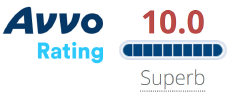Negotiate A Disability Buyout Settlement
Disability Insurance companies sell long term disability policies with the hope that they will never need to pay monthly benefits to an insured. Once an insurance company becomes obligated to pay an insured monthly disability benefits, the insurance company is losing money. In an effort to cut their losses, most disability insurance companies are always interested in the opportunity to buy-out an insured’s disability policy for a one-time lump sum amount.
Our disability lawyers have established relationships with the people at each disability company that make the decisions on disability buyouts. Since 1979 we have helped our clients to recover hundreds of millions of dollars in disability benefits. We always offer a free immediate phone consultation to discuss how we could help you. We work closely with actuaries, financial consultants and treating physicians in order to maximize a buy-out offer.
How Are Lump-Sum Buyouts Calculated?
Every disability company has their own methodology and formulas for determining the value of an insured’s disability income policy. As a result of handling buy-outs with almost every disability insurance company, we are well aware of each company’s valuation methods. There are multiple factors involved in determining the value of an insured’s disability income policy. Some of the factors that insurance companies will consider are:
- the life expectancy and mortality of the insured;
- the current corporate bond rate;
- the likelihood that the insured will remain totally or residually disabled;
- the amount of insurance company reserves for the specific policy;
- the present value of future monthly disability benefits;
- the age of the claimant and years remaining on the policy
In every lump-sum policy buyout, the insurance companies will make an offer that is discounted to present value dollars. This means that if the future value of an insured’s disability payments in 10 years would be $960,000 ($8,000 a month multiplied by 120 months), then the present value is the amount of money an insured needs today at a stated interest rate in order to equal $960,000. Assuming an $8,000 monthly benefit, 120 months of remaining payments, and an interest rate of 4%, then the present value of $960,000 would be approximately $790,000. This means that if you deposited $790,000 in the bank today and received an interest rate of 4%, then you would have $960,000 ten years from today if you never touched the money.
The present value amount is always less than future value. Insurance companies only offer settlements based upon the present value and they will never pay 100% of the present value as there is no financial benefit for them to do so. They will however, use the previously stated factors in arriving at a buy back amount.
Companies Offering Disability Buyouts
Disability insurance companies are not required to offer a lump-sum buyout of a disability, yet of the 40 different companies there are some that do so more than others. The ten most common disability companies that will consider a disability buyout are:
- Cigna (Life Insurance Company of North America)
- Unum
- Prudential
- Lincoln Financial (Acquired Liberty Mutual in 2018)
- Hartford (Acquired Aetna Disability in 2017)
- Sun Life Financial
- Disability Management Services (“DMS”)
- The Standard
- Met Life
- Trustmark
When Does a Disability Buyout Make Sense?
Lump sum buy backs are not advisable for everyone. However, they often make sense for an insured for the following reasons:
- cash received is often tax free to be invested as you desire;
- no risk of future denials or uncertainty of upcoming benefits;
- monthly benefits end at the death of the insured;
- cash received now can be used for estate planning or new venture;
- no longer subject to insurance company solvency;
- option to try a return to work without insurance company scrutiny.
If you are interested in pursuing a lump-sum disability buyout contact Attorneys Dell & Schaefer to make sure you are receiving the maximum buy-out possible.
Resources to Help You Win Disability Benefits
Submit a Strong Appeal Package
We work with you, your doctors, and other experts to submit a very strong appeal.
Sue Your Disability Insurance Company
We have filed thousands of disability denial lawsuits in federal Courts nationwide.
Get Your Disability Application Approved
Prevent a Disability Benefit Denial
Negotiate a Lump-Sum Settlement
Our goal is to negotiate the highest possible buyout of your long-term disability policy.
Denial for benefits, Sedgwick is the worst
Uses every dirty trick in the book
Unum is evil
Every month I get paid on a different date
They will do anything to not approve your claim
Reply
Don't trust them, they like to play games
Lyme Disease Disability Claim Denial
Disappointed with NY Life Disability Excuses
Q: Ameritas Disability Claim Buyout?
Q: Can receiving a Unum group LTD benefit settlement lower my SSDI benefit?
Q: Should I accept the buyout from Lincoln Financial? I have 7 days to decide.
Q: I accepted and deposited a lump sum long term disability payment installment for underpayment from Guardian. Can they ask for money back if I try to work again?
Q: Do you help with negotiating lump sum settlements of policies?
Q: Will Principal harass me if I don't accept their buyout? And, is it standard for a buyout to be lower than the full benefit paid over time?
Q: Would it be better to continue to receive benefits from Lincoln Financial or should I seek a buyout?
Q: Does Lincoln Financial offer lump sum settlements?
Prudential Lump Sum Disability Policy Buyout Options
MetLife Disability Buyout and Lump Sum Settlements are Back
Is my disability insurance company required to offer me a lump sum buyout of my disability policy?
Why consider a lump-sum buyout of your disability insurance policy?
How do disability insurance companies calculate lump-sum buyouts?
What is a lump sum buyout?
Why Must Your Disability Insurance Lawyer Understand Your Disabling Condition?
Disability Benefit Denial Reason #5 – Your Medical Evidence is Weak
Prudential denies and settles long-term disability claim with CPA after CPA becomes totally disabled from chronic cervical neck pain and radiculopathy
Surveillance Video and Independent Medical Examination (IME) Leads to Disability Insurer Terminating Disability Claim After Paying Partially Disabled Insurance Agents Claim For 21 Years
Unum Settles Lawsuit with Florida Chiropractor After Initially Denying Long-term Disability Claim
Hartford Buys Out Disability Policy Following Appeal
Dell Disability Lawyers obtains settlement award for OB/GYN with Unum individual disability policy
Chiropractor Obtains Lump-Sum Disability Insurance Settlement Despite Wrong Date of Disability
Federal Insurance Company and former postal worker reach confidential settlement regarding lump-sum disability policy
CIGNA lump sum settlement buyout offer obtained for former salesman
Reviews from Our Clients







5 Ways We Help Get Your Benefits Paid
Our goal is to get your application for disability insurance benefits approved. Applying for disability insurance benefits can be a difficult process and the information you provide is critical. Most disability insurance companies look at your application in hopes of finding a reason to deny your claim. Your disability company will ask you to complete numerous forms, interview you, request lots of information, speak with your doctors and possibly request to have you examined by their hired gun doctor.
Through our experience of having helped thousands of disability insurance claimants, our disability insurance lawyers will guide you through the entire application process and give you the best chance to get your disability claim approved the first time.
If your disability insurance benefits have been wrongfully denied, then our disability insurance lawyers know exactly what it takes to get your disability claim approved. You only get once chance to submit an Appeal, therefore every piece of evidence that will support your disability claim must be included. The goal is to win your disability benefits at the Appeal level, but while preparing your Appeal you must consider how a federal judge will review your disability claim if your benefit denial is upheld.
Preparing a strong disability appeal package is an art that requires you to understand how the courts interpret your disability policy language, ERISA regulations / laws, and how to strategically present evidence in support of your definition of disability. We encourage you to contact any of our long-term disability attorneys for a free immediate review of your disability denial.
98% of the disability insurance lawsuits filed by our law firm have resulted in either the payment of benefits or a lump-sum settlement agreement. Our disability insurance attorneys have filed ERISA governed and private policy long term disability insurance lawsuits against every major disability insurance company in state and federal courts nationwide and we love fighting for the little guy against the multi-billion dollar insurance company giants.
We have recovered hundreds of millions of dollars for our clients and we would like the opportunity to provide you with a free review of your disability benefit denial. There are many complex factors in a disability benefit lawsuit and the legal battle to win long term disability benefits can be fierce.
Approval of long-term disability is a continuous process as every disability insurance company will evaluate your eligibility for benefits on a monthly basis. You can never let your guard down and assume that your disability company will continue to pay your benefits for as long as you think you need them.
Our disability insurance law firm offers a reasonable flat fee monthly claim handling service in which we handle every aspect of your long-term disability claim and do whatever it takes to make sure you are paid every month.
Let's discuss if a lump-sum settlement or buyout of your disability insurance claim is both available and makes financial sense for you. Our disability insurance lawyers have negotiated more than five-hundred million dollars in disability insurance buyouts and we know how to get you a maximum settlement. A disability insurance company is not required to offer a buyout and not every disability company offers them.
Questions About Hiring Us
We are disability insurance attorneys that know how to get your short or long term disability benefits paid. As a nationwide law firm we have helped thousands of disability insurance claimants throughout the United States to collect hundreds of millions of dollars of disability insurance benefits from every major disability insurance company.
Our attorneys have been able to either get our clients paid monthly disability benefits or obtain a one-time lump-sum settlement in more than 98% of our cases. Our disability insurance lawyers have seen it all when it comes to disability insurance claims and we know exactly what it takes for your disability claim to be approved.
We offer disability insurance attorney representation nationwide and we welcome you to contact any of our LTD lawyers for a free immediate review of your disability claim. We also invite you to visit and subscribe to our YouTube channel where we have more than 900 videos and regularly provide tips to help protect your disability benefits.
Our disability insurance attorneys help individuals that have either purchased a long term disability insurance policy from an insurance company or obtained short or long term disability insurance coverage as a benefit from their employer. We have helped individuals in almost every type of occupation with monthly disability benefit payments ranging from $1,500 to $50,000.
Our clients include all types of employees ranging from retail associates, sales representatives, government employees, police officers, teachers, janitors, nurses, pilots, truck drivers, financial advisors, doctors, dentists, veterinarians, lawyers, consultants, IT professionals, engineers, professional athletes, business owners, and high level executives.
A strong understanding and presentation of the duties of your occupation is essential for securing disability insurance benefits.
Yes. We are a national disability insurance law firm that is available to represent you regardless of where you live in the United States. We have partner lawyers in every state and we have filed lawsuits in most federal courts nationwide. Our disability insurance lawyers represent disability claimants at all stages of a claim for disability insurance benefits. There is nothing that our lawyers have not seen in the disability insurance world.
Since we represent disability insurance claimants at different stages of a disability insurance claim we offer a variety of different fee options. We understand that claimants living on disability insurance benefits have a limited source of income; therefore we always try to work with the claimant to make our attorney fees as affordable as possible.
The three available fee options are a contingency fee agreement (no attorney fee or cost unless we make a recovery), hourly fee or fixed flat rate.
In every case we provide each client with a written fee agreement detailing the terms and conditions. We always offer a free initial phone consultation and we appreciate the opportunity to work with you in obtaining payment of your disability insurance benefits.
No. For purposes of efficiency and to reduce expenses for our clients we have found that 99% of our clients prefer to communicate via phone, email, fax, or video conferencing sessions. If you prefer an initial in-person meeting please let us know. A disability company will never require you to come to their office and similarly we are set up so that we handle your entire claim without the need for you to come to our office.
When you call us during normal business hours you will immediately speak with a disability insurance attorney. We can be reached at 800-698-9159 or by email. Lawyers and staff must return all client calls same day. Client emails are usually replied to within the same business day and seem to be the preferred and most efficient method of communication for most clients.
Popular Searches